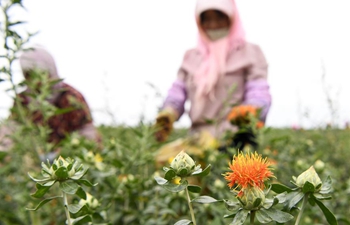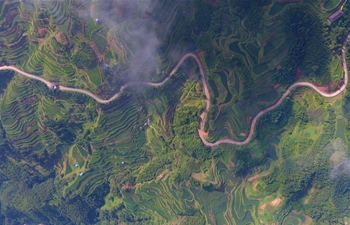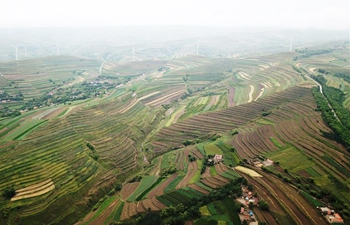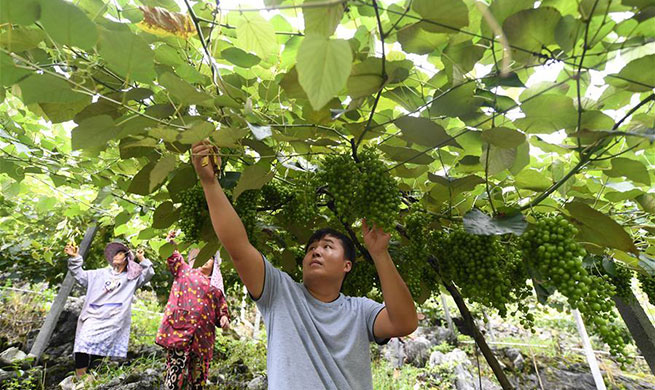YINCHUAN, July 25 (Xinhua) -- Ma Wenrang has been protecting a 53-hectare hilltop in his doorway for more than one and a half years.
At 7 a.m., the 57-year old forest ranger starts up his motorbike and begins his daily patrol around Liupan Mountain in northwest China's Ningxia Hui Autonomous Region, "to make sure no sheep run into the thick grass especially in midsummer."
"The hilltop is covered with so much green, comparing with a 'bare head' in the past," Ma said.
Growing up in Yaojian Village at the foot of Liupan, an important ecological barrier to conserve water and soil on Loess Plateau, Ma has witnessed tremendous changes around the mountain, where is also one of the most severe poverty-stricken areas in China.
Like many residents, Ma used to grow corns, and raise cows and sheep, but could barely feed his family.
"To survive, we went up Liupan and reclaimed the land for grazing in an excessive way, causing serious water and soil erosion," he said.
Yaojian Village, in the city of Guyuan, is an epitome of many parts of China decades ago, which was caught in a dilemma of ecological fragility and deep poverty.
To hold back the aftermath of sandstorms and soil erosion, China launched the Three-North Shelterbelt Forest Program (TSFP) in 1978.
Consisting of forestation in northwest, north and northeast China, the eight-phase project, covering 13 provincial regions which are about 42.4 percent of the country's total land area, is expected to be completed by 2050.
In the past four decades, over 7.88 million hectares of windbreak trees have been planted, 336,200 square kilometers of desertification land has been fixed, and more than 10 million hectares of desertified grassland have been protected and restored, according to a report released by the Chinese Academy of Sciences.
Forest coverage had grown to 13.57 percent from 5.05 percent in 1977.
The program has effectively curbed the expansion of desertification and become a "Green Great Wall" to prevent sandstorms, conserve water and soil and safeguard agriculture.
To get more people involved, the project has also provided benefits to local residents, selecting ecological rangers to safeguard their homeland.
Besides Ma, more than 7,000 underprivileged villagers in the city of Guyuan have been employed as forest ranger so far, each of whom can get an annual payment of 10,000 yuan (1,454 U.S. dollars), about 3.6 times more than their annual income before.
By 2018, there are about 197,000 ecological rangers in areas where the TSFP was implemented. China will allocate another 2.5 billion yuan of subsidy this year, with priority given to impoverished regions.
Meanwhile, three industrial belts of growing fruits have been built in Loess Plateau, Xinjiang Uygur Autonomous Region, and Hebei Province. More than 4 million hectares of the three economic belts can generate 120 billion yuan of output value annually, helping 150 million villagers shake off poverty.
"We have been promoting a harmonious path between economy and ecology, improving people's livelihood while pursuing green development," said Zhang Wei, director of Three-North Shelterbelt Program construction bureau of China's National Forestry and Grassland Administration.
To better facilitate China's poverty alleviation campaign, the program is expected to provide more job opportunities and industrial profits with yearly afforestation of over 6,667 hectares, he added.
"We relied on the mountain to survive in the past, but now we make fortunes in it while protecting it properly," Ma said.
















